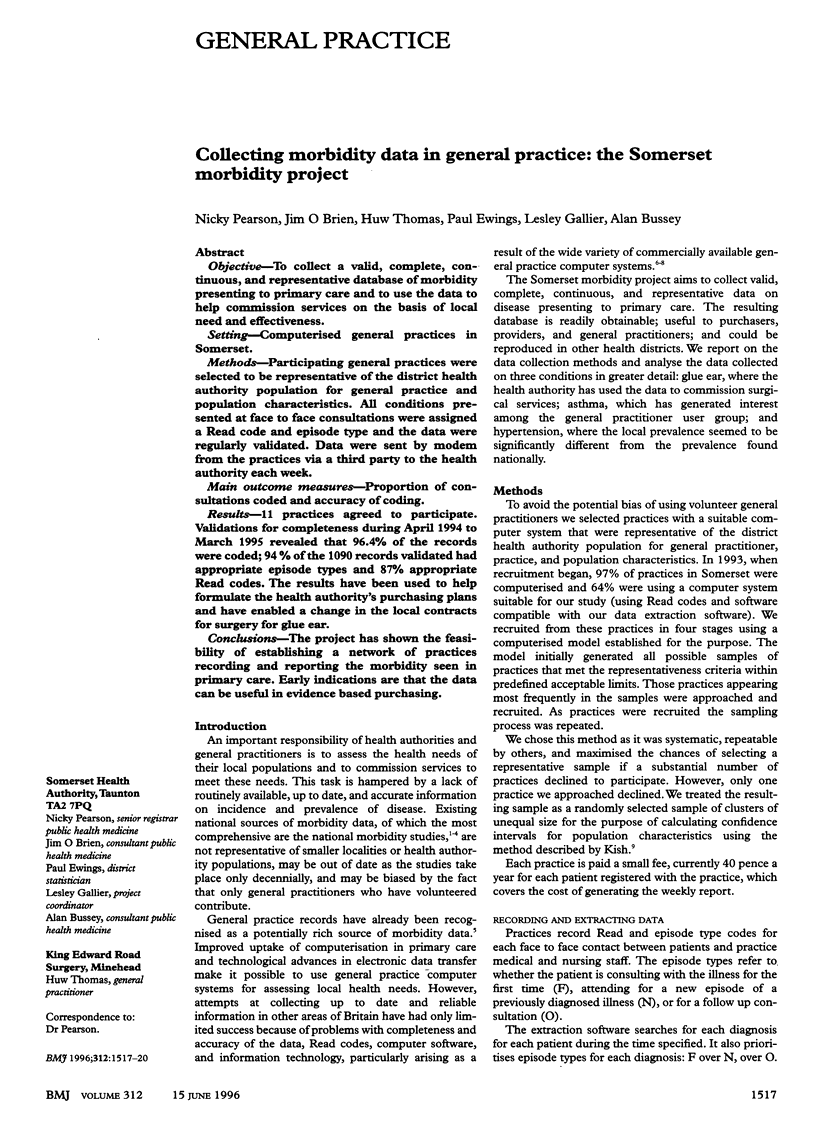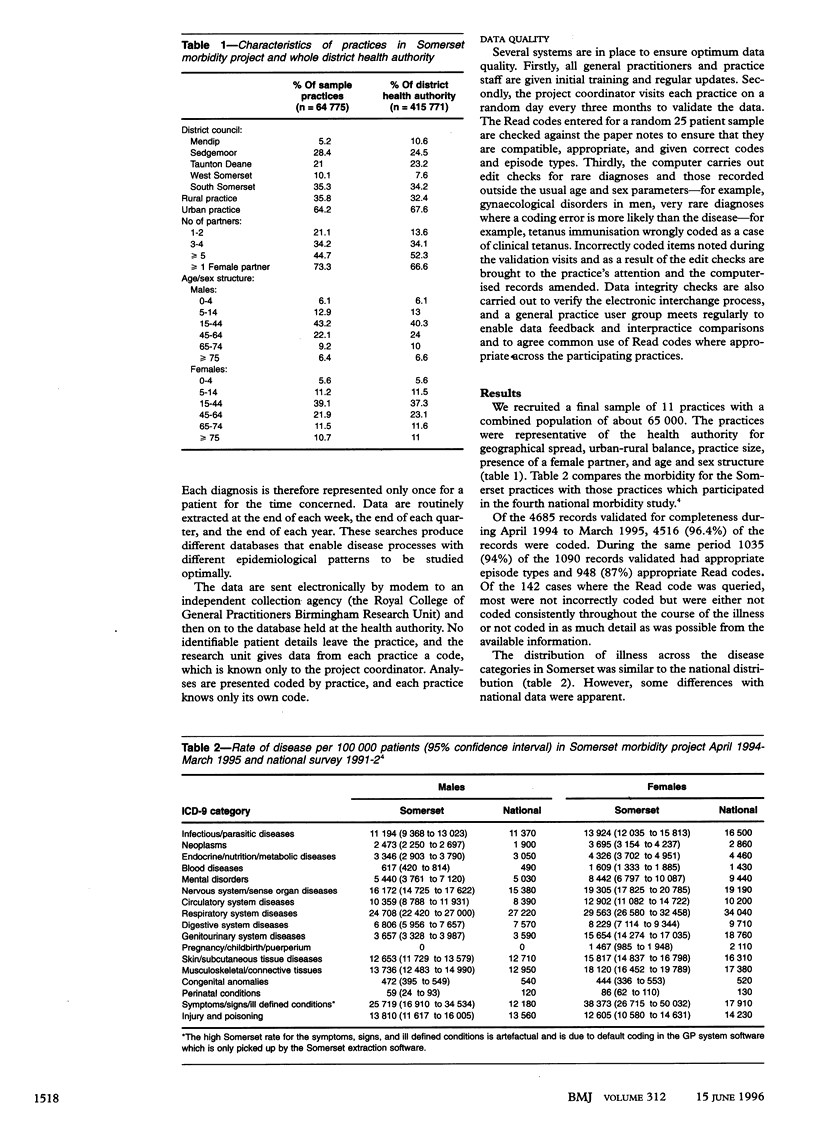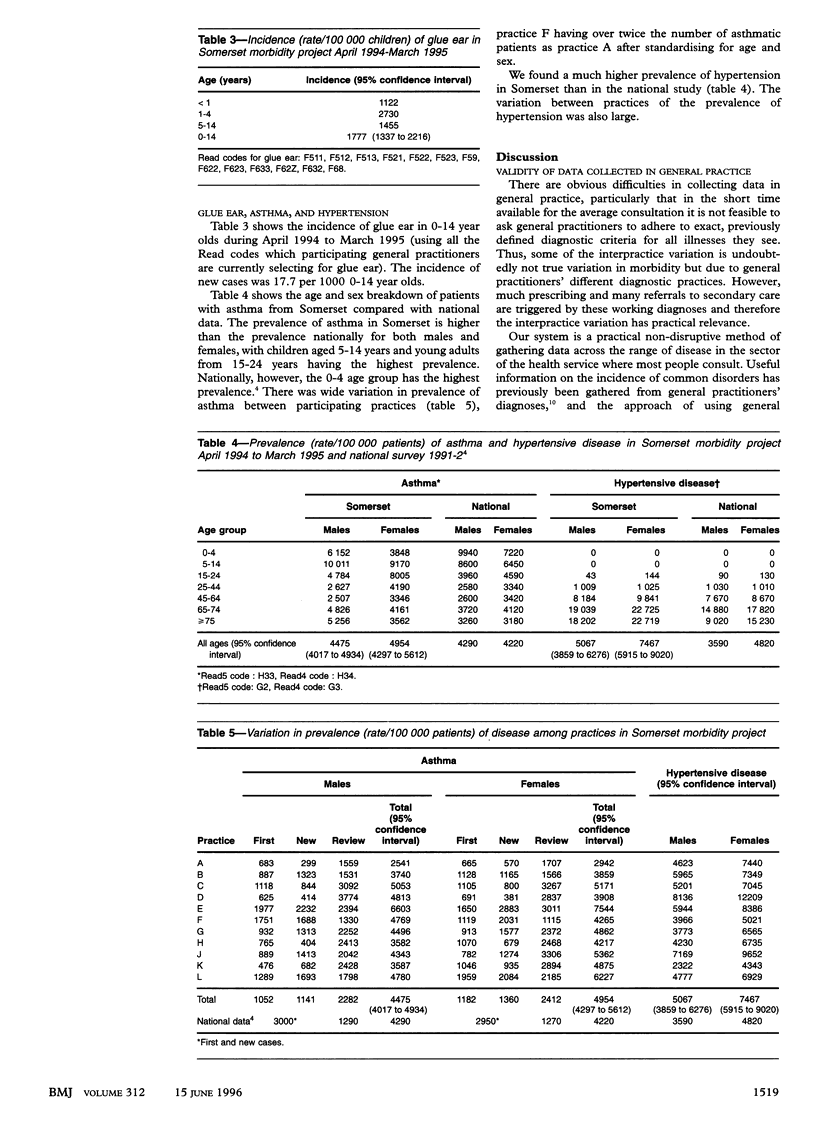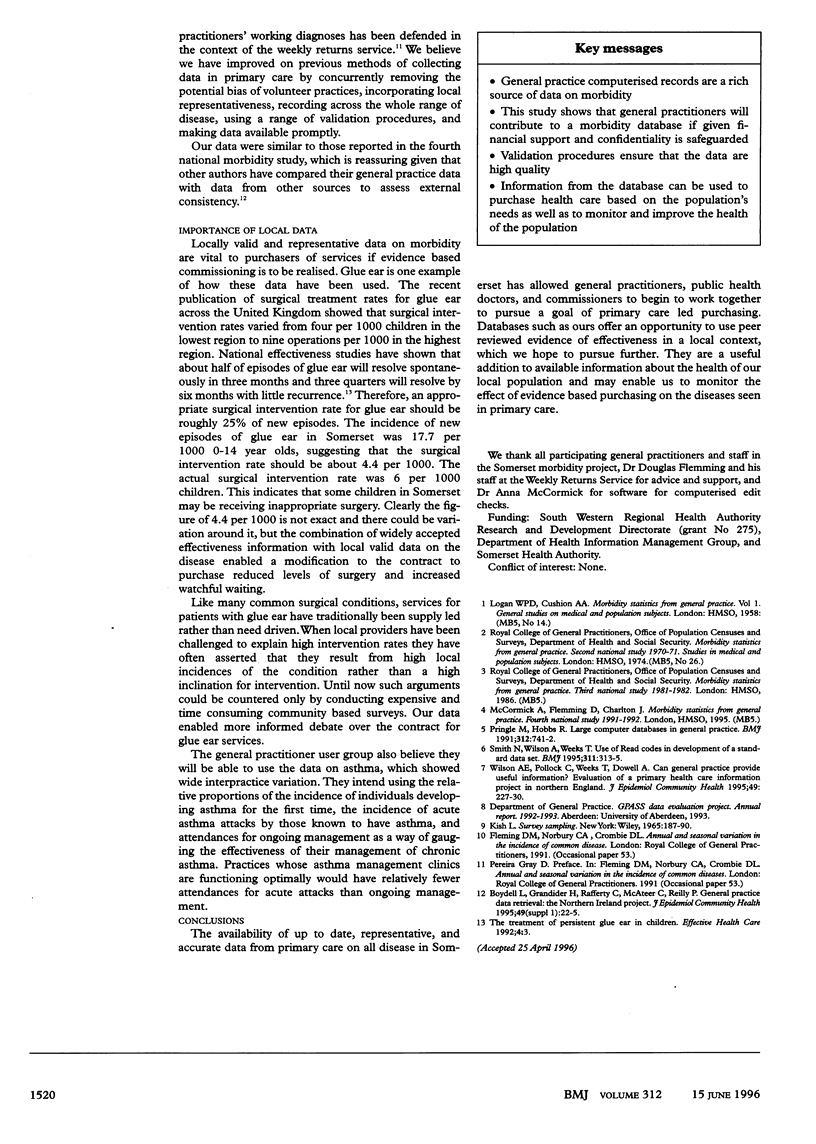Abstract
OBJECTIVE--To collect a valid, complete, continuous, and representative database of morbidity presenting to primary care and to use the data to help commission services on the basis of local need and effectiveness. SETTING--Computerised general practices in Somerset. METHODS--Participating general practices were selected to be representative of the district health authority population for general practice and population characteristics. All conditions presented at face to face consultations were assigned a Read code and episode type and the data were regularly validated. Data were sent by modem from the practices via a third party to the health authority each week. MAIN OUTCOME MEASURES--Proportion of consultations coded and accuracy of coding. RESULTS--11 practices agreed to participate. Validations for completeness during April 1994 to March 1995 revealed that 96.4% of the records were coded; 94% of the 1090 records validated had appropriate episode types and 87% appropriate Read codes. The results have been used to help formulate the health authority's purchasing plans and have enabled a change in the local contracts for surgery for glue ear. CONCLUSIONS--The project has shown the feasibility of establishing a network of practices recording and reporting the morbidity seen in primary care. Early indications are that the data can be useful in evidence based purchasing.
Full text
PDF



Selected References
These references are in PubMed. This may not be the complete list of references from this article.
- Boydell L., Grandidier H., Rafferty C., McAteer C., Reilly P. General practice data retrieval: the Northern Ireland project. J Epidemiol Community Health. 1995 Aug;49 (Suppl 1):22–25. doi: 10.1136/jech.49.suppl_1.22. [DOI] [PMC free article] [PubMed] [Google Scholar]
- Pringle M., Hobbs R. Large computer databases in general practice. BMJ. 1991 Mar 30;302(6779):741–742. doi: 10.1136/bmj.302.6779.741. [DOI] [PMC free article] [PubMed] [Google Scholar]
- Smith N., Wilson A., Weekes T. Use of Read codes in development of a standard data set. BMJ. 1995 Jul 29;311(7000):313–315. doi: 10.1136/bmj.311.7000.313. [DOI] [PMC free article] [PubMed] [Google Scholar]
- Wilson A. E., Pollock C., Weekes T., Dowell A. Can general practice provide useful information?--evaluation of a primary health care information project in northern England. J Epidemiol Community Health. 1995 Jun;49(3):227–230. doi: 10.1136/jech.49.3.227. [DOI] [PMC free article] [PubMed] [Google Scholar]


